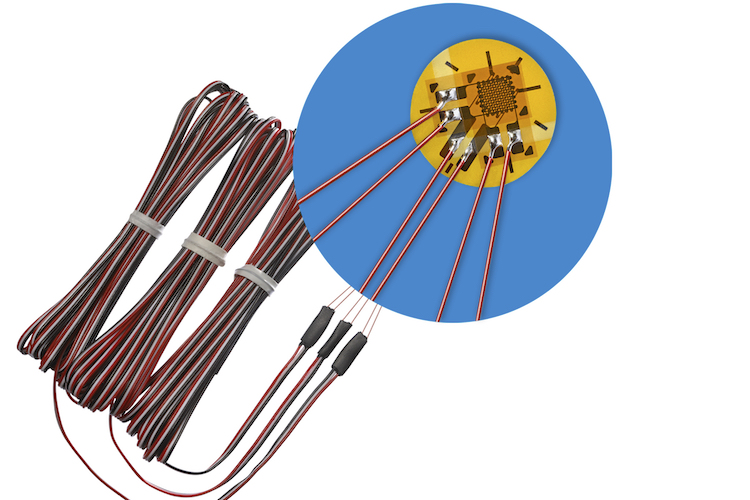
Micro-Measurements releases miniature strain gage sensor for robots and drones
Micro-Measurements has launched a miniature strain gage sensor which it says is suitable a number of automation applications, including in autonomous vehicles, robotics, smart manufacturing, and the wearables markets.
The new strain gage sensor is “advantageous in applications that benefit from small size and higher resistance”, says the company.
The Micro-Measurements brand is part of the Vishay Precision Group, which designs, develops and manufactures resistive-foil sensors for high-precision strain, high-stress and force mechanism measurements.
The new G1350 C2K-Series strain gage is a miniature stacked rectangular rosette sensor built to meet the developing need for precise, consistent, and reliable stress analysis of PCBs, even in severe environments, says Micro-Measurements.
The G1350 is designed to detect PCB surface strains at critical locations in consumer electronics. The miniature strain gage is particularly advantageous in applications that can benefit from its small size and higher resistance of 120 ohms and 350 ohms.
Micro-Measurements says the G1350 is “ideal” for applications in structural health monitoring, industrial internet of things, autonomous vehicles, instrumentation and control, machinery and equipment, motion control, Industry 4.0, robotics, smart cities, smart manufacturing, smart infrastructure, wearable electronics, and wireless applications.
Designed using the same standards as traditional Micro-Measurements gages, the new line of C2K series strain gages is based upon advanced technology manufacturing processes that allows high resistance in small-sized gage patterns.
The uniaxial linear stacked rosette C2K-06-G1350-350 features an active grid length of just 0.040” and an overall matrix of 0.20”diameter to allow spot-on installation on surface-mount components.
The 3 meters of pre-attached three-conductor cable is built to ease and speed-up installation processes by eliminating the need of lead wire soldering after bonding.
Miniaturizing consumer electronics will result in higher component density, increased thermal stresses, new requirements for surviving repeated loadings, and a larger need for impact stress survival.
In order to meet these requirements, precise knowledge of strains in the PCB and on-board components is a must.
The most accurate, swift, and cost-effective manner to detect strains on a PCB is through strain gage measurement, which can also be used in developing loading fixtures and test plans to optimize the testing phase.
The new strain gage features a Modified Karma, or K-alloy (C2K), and an epoxy overcoat for grid encapsulation. The second generation of the G1350 is based on K-alloy, with its extensive areas of application, representing a vital member in the family of strain gage alloys for PCB testing.
Categorized by strong fatigue life and excellent stability, K-alloy strain gages can be exposed to temperatures as high as +150°F (+66°C).
An inert atmosphere will strengthen stability and extend the useful gage life at high temperatures. Among its other advantages, K-alloy offers a much flatter thermal output curve than A-alloy, allowing more precise correction for thermal output inaccuracies at temperature extremes.
Like constantan, K-alloy can be self-temperature-compensated for use on materials with different thermal expansion coefficients.
K-alloy is the normal selection when a temperature compensated gage is required that has environmental capabilities and performance characteristics not attainable in A-alloy gages.
As required by standards in the electronics industry, PCAs must be tested to determine if the design can withstand the rigor of manufacturing, packaging, transporting, and day-to-day use of electronic devices.
Some of the methods in the process in which strain gages are used for printed circuit assembly testing include: ensuring appropriate surface preparation materials are on hand, selecting an adhesive, selecting a protective coating that will resist environmental conditions, and selecting the measurement instrumentation.
